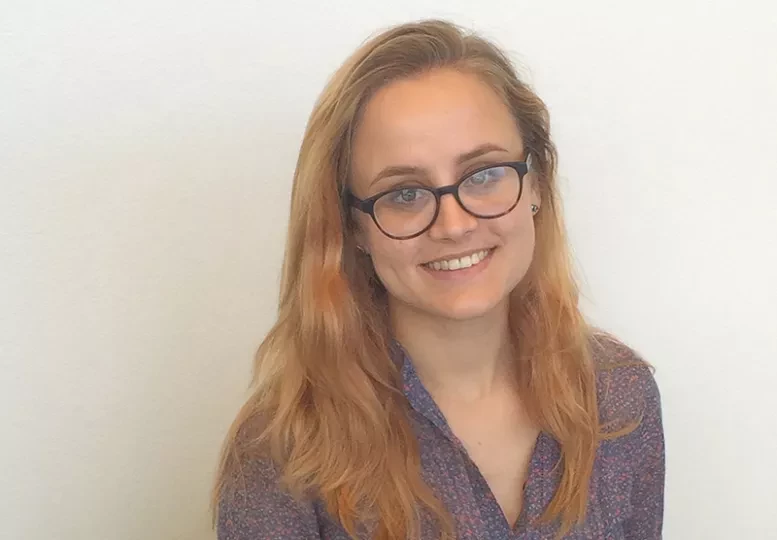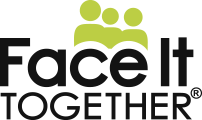Hope is the thing with feathers

By Erin Burman, summer research intern
Published Aug. 1, 2018
How lucky I am to have spent the last two months interning at Face It TOGETHER! My time here is drawing to a close, and I am so grateful for my colleagues and especially my mentor, Senior Evaluation Scientist Kristen Goettsch, for making this internship such an educational experience.
This summer I worked with the evaluation team to learn more about clients’ experiences with peer coaching at FIT. I sent an online survey to 215 former clients, which explored the impact of peer coaching on various aspects of their lives, including mental and physical health, legal and financial status, addiction wellness and community involvement.
As with any evaluation project, the results of this survey will help assess how effective our services are, but I'm hoping the project will address some more fundamental questions as well. Most notably: How do you get people to change their unhealthy behaviors? It’s a deeply complex issue, and if someone had figured out exactly how to do it, we’d have solved addiction already. Working at FIT, I believe we have figured out a few pieces of the puzzle: 1) people only change when they have decided to change; 2) people trying to change need a lot of loving support; and 3) no two people change exactly the same way. But the complete answer to my question remains elusive.
While I was thinking through this difficult problem at work, I was spending weekends at a local park birdwatching, a hobby I picked up from my college ornithology class. One Saturday morning, I noticed an unusual avian visitor to Sioux Falls. He was a large, gangly bird, mostly gray with a long yellow plume on his head, perching awkwardly on a bare branch over the water. I checked my field guide to confirm what I thought, and sure enough – it was a yellow-crowned night heron, a marsh bird native to the southern coasts of the United States. It had apparently migrated several hundred miles north of its normal range to visit this park in South Dakota. Now, here was an unhealthy behavior! Because of its unusual travels, the bird is unlikely to find a mate this season, and will certainly be in peril if it doesn't head south before winter. As a recent transplant from the South myself, I found myself empathizing with the heron. I snapped a photo and sent it to the Cornell Lab of Ornithology so they would be aware of this unusual sighting. For the rest of the summer, as I contemplated the issues surrounding addiction, I also occasionally worried about that lost heron, which I continued to see periodically at the park.
Seventeen former FIT clients ended up responding to my follow-up survey. The results looked great: most respondents reported that coaching helped them develop healthier habits, improve their connections with friends and family and feel healthier. They said coaching empowered them to improve their employment status and work through legal issues. Most respondents said they no longer used drugs and alcohol.
The result that stood out to me the most was clients’ improved sense of hope. When we asked clients about the greatest impact FIT had on their lives, they chose the option: “Increased my sense of hope” most often. Additionally, while only 24% of clients said they were hopeful before FIT, 94% reported they felt hopeful today.
While interning at FIT, I have seen this phenomenon take place in the coaching room. Clients come in feeling as though they have run out of options. Nothing has worked before and they are worried they might never get well. Then their coach introduces them to new opportunities for wellness, and the clients’ faces light up with hope.
Back at the lake, my rare heron was causing a sensation. The local birdwatching group heard of the sighting, and I ran into birdwatchers who came from nearby towns to see it. One beautiful morning last weekend, I spotted the heron standing peacefully in the still water one last time. The bird looked so serene. Clearly, it hadn’t got the message that it was lost. I was reminded of that Emily Dickenson poem:
“’Hope’ is the thing with feathers -
That perches in the soul -
And sings the tune without the words -
And never stops - at all -
And sweetest - in the Gale - is heard -
And sore must be the storm -
That could abash the little Bird
That kept so many warm -
I’ve heard it in the chillest land -
And on the strangest Sea -
Yet - never - in Extremity,
It asked a crumb - of me.”
So, I am feeling optimistic about my confused heron. I believe his apparent hopefulness will allow him to weather the remainder of his Midwestern travels. I am optimistic about our clients here at Face It TOGETHER, too. Hope, I think, is a powerful medicine. It permits us to tolerate difficult times that may otherwise seem completely intolerable – like suffering from the disease of addiction.
I believe hope is another piece of the puzzle when it comes to empowering people to make healthy changes in their lives. Our coaches are living proof that wellness is possible. Their tireless advocacy, support and positivity offers clients irrefutable evidence that they, too, can change for the better.
